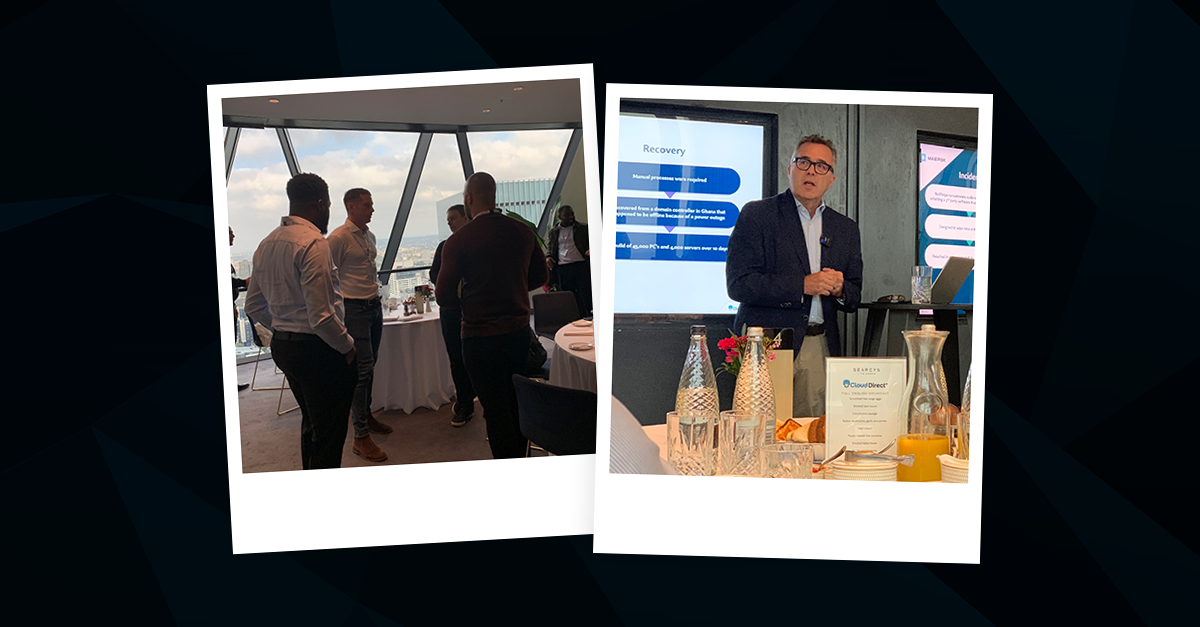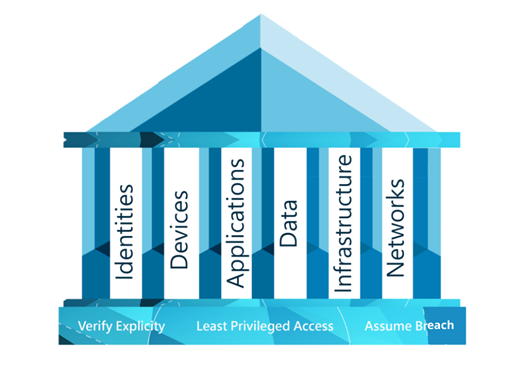
In the blink of an eye, a few months passed and we were heading back to the Gherkin to hold our second breakfast briefing of the year. Hosting an exclusive group of security and technology leaders from the financial services sector, with the London skyline as a backdrop, we delved into critical discussions about managing operational resilience in today’s fast-evolving financial landscape.
To guide the conversation, we were joined by James Hardy, former Chief Resiliency Officer at State Street Corporation, and Microsoft’s Yasser Toson. They provided invaluable insights into the cutting-edge technologies Microsoft uses to ensure near-perfect resiliency SLA rates of 99.998%.
Key highlights
Henry Bird led the session, introducing the agenda and highlighting the strategic partnership between Cloud Direct and Microsoft. Over the past two decades, Cloud Direct has grown ever closer to Microsoft, and now rank in the top 0.5% globally. This status brings tangible benefits to our clients, including enhanced access to advanced Microsoft support, funding, and in-depth solution assessments – which Henry provided a whistle-stop tour of before the main event.
James Hardy, former Chief Resiliency Officer and State Street
Following Henry’s introduction, James Hardy highlighted the importance of understanding the interconnected risks within the financial markets – particularly in an increasingly complex, technology-driven world. He emphasised the need for organisations to not only implement technical solutions, but to align them with a resilient mindset and culture.
“It’s forcing organisations to better understand the environment which they operate in, particularly as the technology world we’re in is exponentially networked and complicated and so humans are truly not able to understand the inter connectivity,” he said. “No one understood the interconnectivity of the financial markets in 2007 to 2008, and we are treading back towards concentrated risks that aren’t known.”
This, ultimately, raised the question: How are technology providers like Microsoft ensuring the safety and resilience of their customers in this complex landscape?
A perfect segue…
Yasser Toson, Azure Core Specialist at Microsoft
Finally, Yasser Toson, Microsoft’s Azure Core Specialist, addressed the challenges mentioned by James by highlighting Azure’s robust infrastructure for fault tolerance and disaster recovery.
He introduced the Azure Business Continuity Centre, a new tool designed to streamline continuity operations and ensure the highest level of operational resilience, and Azure Chaos Studio, a platform enabling businesses to simulate real-world failures and stress-test their systems to prepare for the unexpected. With these innovations, Microsoft continues to lead the way in safeguarding the future of financial services, and Yasser’s comprehensive tour of the platforms was well received by those in attendance.
What we learned
We always come away feeling excited and inspired when we have the chance to sit down, face to face, with a group of prospects and customers and explore the challenges they’re facing. In just a couple of hours, both James and Yasser covered plenty of ground and gave us and attendees plenty to think about.
But, in summary, there were three key lessons…
Learning from the past
In James’ talk, he took us through a couple of examples of previous resiliency failures, how they were handled, and the consequences they had. In exploring how Maersk, the world’s biggest shipping company, dealt with the disruption of a major outage across almost its entire cloud environment, and how ION Group coped with a wide-ranging ransomware attack, James provided grounding and context to the rest of his talk by demonstrating the real-world impact of managing, or mismanaging, operational resilience.
Preparation is key
Each attack is different, every outage has its own unique cause… but that doesn’t mean preparation is impossible. As well as learning from the previous real-world examples, Yasser’s introduction of Azure Chaos Studio also showed attendees how they can run realistic tests within their own environments. By quite literally introducing chaos into your own test environment, your team will have the opportunity to assess its handling of a breach, from reactive policy enforcements to data recovery times, and learn from realistic but simulated scenario.
Constant evolution requires constant learning
Business continuity plans and disaster recovery objectives have been around for long time, but they can often be mistaken for tick-box exercises. As threats evolve, so too must the way our teams react to them – and that requires instilling a culture of constant and constant learning. It’s down to technology leaders to build that environment, and in doing so create a team that is knowledgeable, responsive, and innovative – and we’re here to help with that.
If you missed out, there’s no need to worry. We’re sorry that we can’t put breakfast on, but the event is available to watch on-demand on The Learning Hub.





